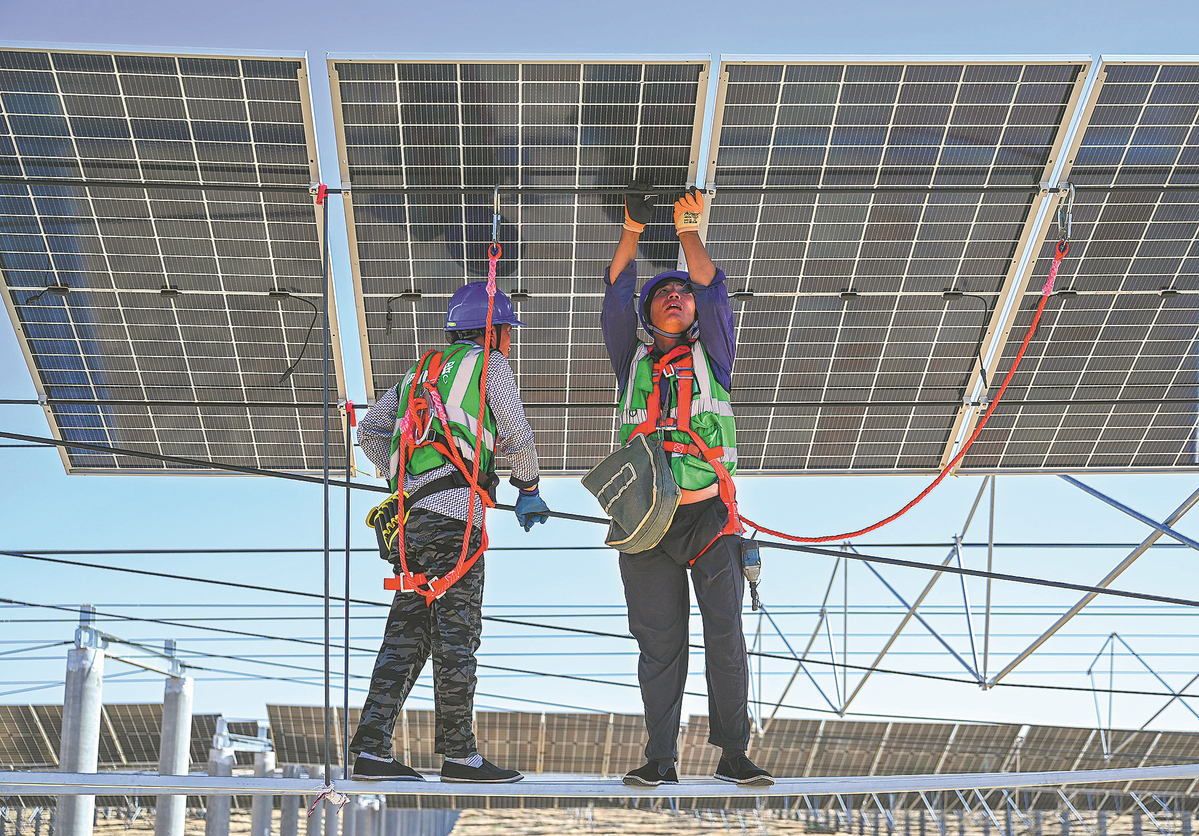
Workers install photovoltaic panels as part of a desertification control project in the Kubuqi Desert in North China's Inner Mongolia autonomous region in July 2023. LIU LEI/XINHUA
In the Inner Mongolia autonomous region, people at the forefront of the fight against desertification have recently resorted to a new approach — combining sand control with wind and solar power projects to tame the once ever-expanding desert.
Sun Shaocheng, the region's Party secretary, said that innovation is key to the success of the region's broad green development initiatives, as Inner Mongolia aims to treat nearly 800,000 hectares of desert by 2030 using the new method.
In an interview with China Daily on Monday, Sun said the new approach was listed as a crucial regional project at a local Party conference late last year, and is considered a key move in winning the region's sand control battle, which has national significance.
"The approach can achieve many benefits in one go," he said.
Constructing an ecological barrier in northern China is a major task President Xi Jinping bestowed on the region since the 18th National Congress of the Communist Party of China in 2012, he said.
Inner Mongolia is a major battleground for advancing the Three-North Shelterbelt Forest Program, an ecological project proposed by the Chinese government in the 1970s to improve the ecological environment in northern China and to prevent the expansion of desertification.
Sun said the regional government has issued a plan for integrating sand control and green energy production, with the aim of completing the treating of around 767,000 hectares of desert and achieving installed capacity of 119 million kilowatts of new energy by 2030.
Sun said the region has pledged to better coordinate the development of new energy projects with sand control and speed up the construction of centralized solar power plants and power cables in the "sand, gravel and desert" areas.
Authorities will also explore a model in which crops and animals can be raised among solar panels, which will result in a win-win situation of increasing greenery, energy and income, he said.
The target this year is to treat about 153,000 hectares of desert using this new method and increasing installed capacity of new energy by 27.27 million kilowatts.
Using all methods combined, the region aims to treat 1 million hectares of desert this year and 6.46 million hectares by 2030.
About 20 percent of the land in the region is affected by desertification and sand encroachment, though the region is considered to be among China's ecologically diverse areas, with vast swaths of forestry and grassland.
Sun said the region will be responsible for the lion's share of the construction volume of the Three-North program between 2021 and 2030.
"Inner Mongolia is the primary battleground for combating desertification and the front line defense against sandstorms," he said.
"To maximize the benefits and ensure long-term effectiveness of desert control, we need to look beyond just treating the desert and focus on holistic management," he said.
Inner Mongolia has innovated in recent years to combine sand control with food production as China works to bolster its food security.
Official data show that the region has created 9.13 million hectares of forests and 22.4 million hectares of grassland since 2012, and has treated 9.87 million hectares of desert.
Source: By Li Lei,Yuan Hui and Hou Liqiang, chinadaily.com, May 14, 2024 [https://www.chinadaily.com.cn/a/202405/14/WS6642a2aba31082fc043c6e02.html]

